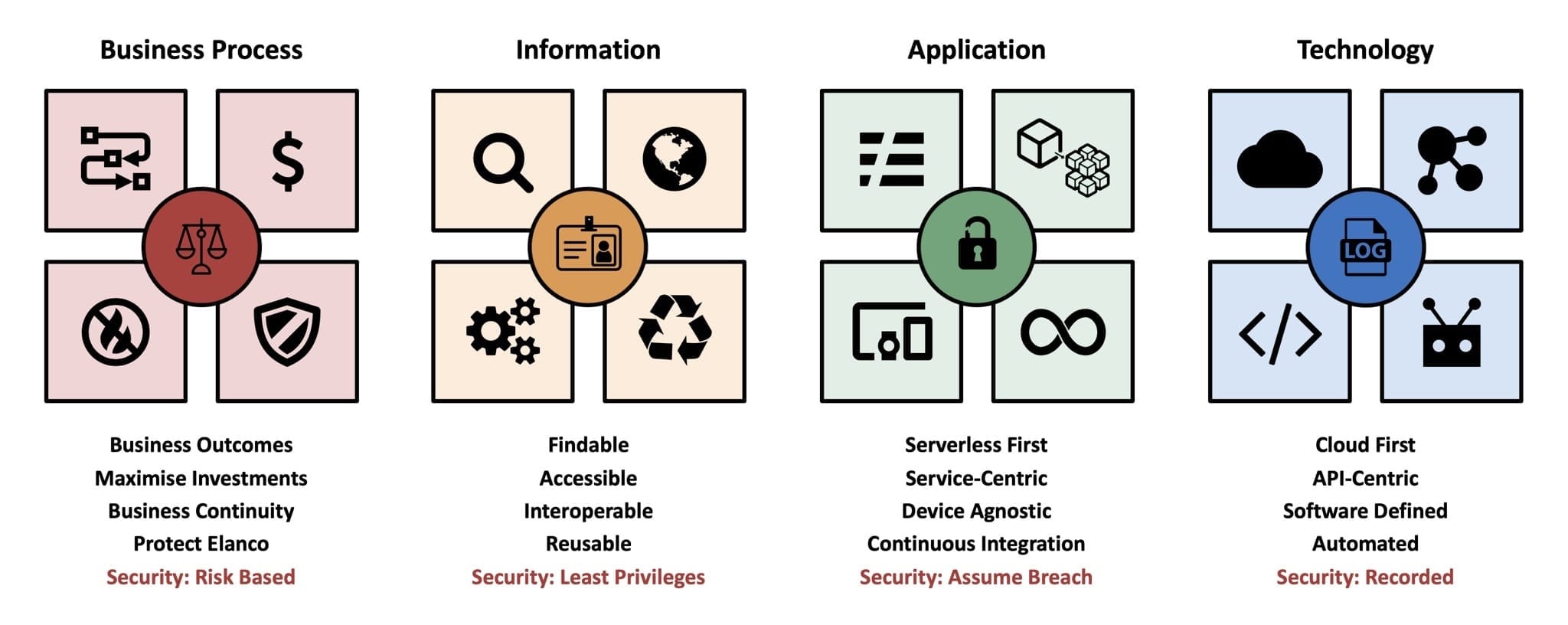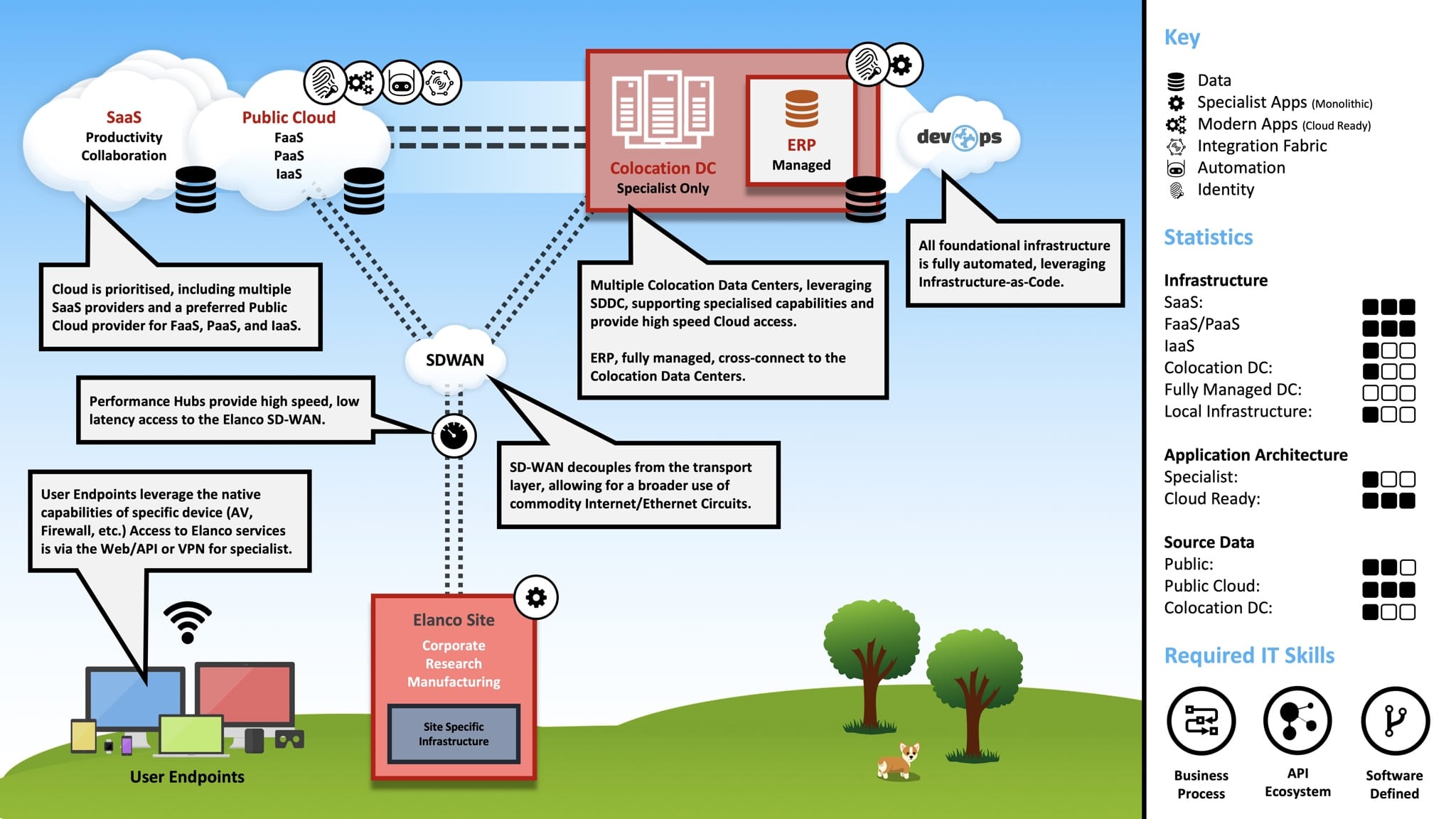UK EA Forum - Part VI
In 2017, I launched a UK Enterprise Architecture Forum, which supports an open community of architects, allowing them to share ideas, experiences, and challenges.
The forum aims to meet once per quarter, however, we also collaborate throughout the year via digital channels. Details of the previous meetings can be found linked below:
- UK EA Forum - Part I
- UK EA Forum - Part II
- UK EA Forum - Part III
- UK EA Forum - Part IV
- UK EA Forum - Part V
Today, we held the sixth forum, where we covered the following topics:
- IT4IT - IT Service Management
- Architect Skills / Behaviours
- Enterprise Architecture Principles
- Greenfield Opportunity
Outlined below are my notes from the meeting.
IT4IT - IT Service Management
IT Service Management has always been a challenge for businesses with a decentralised operating model.
Technologies such as ServiceNow can help, through the use of self-service, workflows, approvals, etc. However, the service is only as good as the business process, which is not inherently defined.
BP shared an update regarding their digital modernisation initiative, which included a new framework to support IT Service Management. The easiest way to understand the framework is to watch the session they recently delivered at the Now Summit in London.
The framework de-emphasises centralised IT, by embracing an “Agile-like” approach, where any team (decentralised) can create a service and make it available for consumption via an internal marketplace. A key ramification of this change is accountability, which now sits with the team that created the service (including lifecycle, change management, security, quality, privacy, etc.)
The framework is split into three parts.
- A Service (A group of resources).
- A Service Offering (What people consume).
- A Resource (What makes up the service).
To ensure the framework can scale naturally, with minimal governance, the following constraints are applied.
- A resource must be in one and only one service.
- No direct relationship between a resource and a product.
- Users inherit roles only from the groups they are in.
The goal for BP is to enable an internal marketplace (an API ecosystem), where teams can create, share, reuse and update services, without manual intervention or unnecessary bureaucracy. In a perfect world, these services become highly automated (improving agility), easy to manage (clear dependency mapping), as well as continuously maintained (clear accountability).
The framework does not replace the need for an overarching governance. For example, Enterprise Architecture must still help to define strategic technologies, positioning, etc. It is also not a “silver bullet”, meaning that it might not be the right fit for every company (depending on the size, organisational structure, culture, etc.)
BP is looking to build an open community around the framework, therefore, if you are in the process of enabling a new IT Service Management capability, I would recommend connecting via our LinkedIn Group.
Architect Skills / Behaviours
The forum discussed the evolving role, skills, and behaviours of an architect. The following quote was highlighted from “Accelerate” (Forsgren, Humble, Kim).
*High performance is possible with all kinds of systems, provided that the systems - and the teams that build and maintain - them are loosely coupled.
Testability and deployability are important characteristics.
Architects should focus on engineers and outcomes, not tools and technologies.*
Everyone agreed that Enterprise Architecture must drive a clear value proposition and act as an enabler (not a barrier or an inconvenience). To achieve this outcome, architects must be an embedded part of the business process, supporting the design and delivery of IT solutions to meet business outcomes.
I shared the following behaviours, which I have used to help set clear expectations across the architecture community at my company. It is worth noting that not all of these expectations will apply to everyone business.
Business Outcomes
- All architecture decisions must enable the business, with a clear purpose and value proposition.
- Best in class technology, may not be best for our business. Focus on the business requirements, not the technology.
- Maximise investments, delivering IT solutions at the highest quality, with lowest cost and risk.
Accountable
- Industry analysts and vendors can provide valuable insight, but you own the decision.
- Include business continuity into planning and decision-making.
Inclusive
- Ensure all architecture decisions support the broader strategy, with a clear understanding of all dependencies. This must include security, quality, and privacy by design, following a risk-based approach.
- Consider global and regional requirements, specifically related to security, privacy, and regulatory constraints.
- Focus on relationships, partnering to translate technology into business outcomes.
Community
- Challenge each other with respect and always assume good intentions.
- Be an enabler, not a barrier. Directly contribute to enabling positive outcomes through collaboration.
- Leverage the community, thinking reuse before buy, buy before build.
In many respects, the role of an architect is no longer a dedicated discipline. Instead, like Security, Quality, and Privacy, everyone must be accountable for architecture. With this in mind, the evolving role of an architect is to help enable this mindset.
Enterprise Architecture Principles
Unsurprisingly, Enterprise Architecture is a common topic at the forum. Generally speaking, most forum members follow their own methodology, taking the best parts from established frameworks such as TOGAF, etc.
I have previously shared my work regarding Enterprise IT Architecture, including Principles, Positioning and Patterns.
This agenda topic focused specifically on principles. I shared the following slide, summarising principles across four domains (Business Process, Information, Application, and Technology).

Although every business is unique, the continued impact of digitisation has resulted in a lot of common themes (e.g. API-Centric, etc.)
Greenfield Opportunity
As a thought experiment, the group discussed the “art of the possible” if an enterprise business could hypothetically rebuild IT from the ground up, creating a modern IT ecosystem. As part of this discussion, I took the opportunity (using the slide below) to share my vision of a modern IT ecosystem.

This topic highlights the power of the UK Enterprise Architecture Forum, where I was able to position a topic for discussion, without fear of bias, and leverage the collective expertise and experience of the group.
Conclusion
If you are interested in the joining the UK Enterprise Architecture Forum, please request access via our LinkedIn Group. All architects are welcome, covering start-up and enterprise businesses.